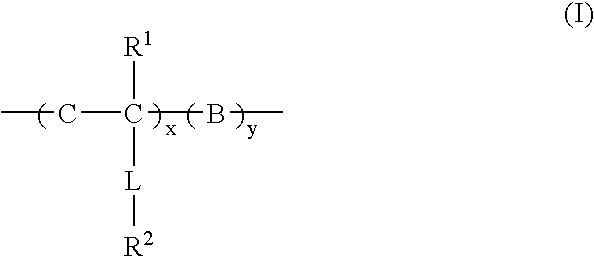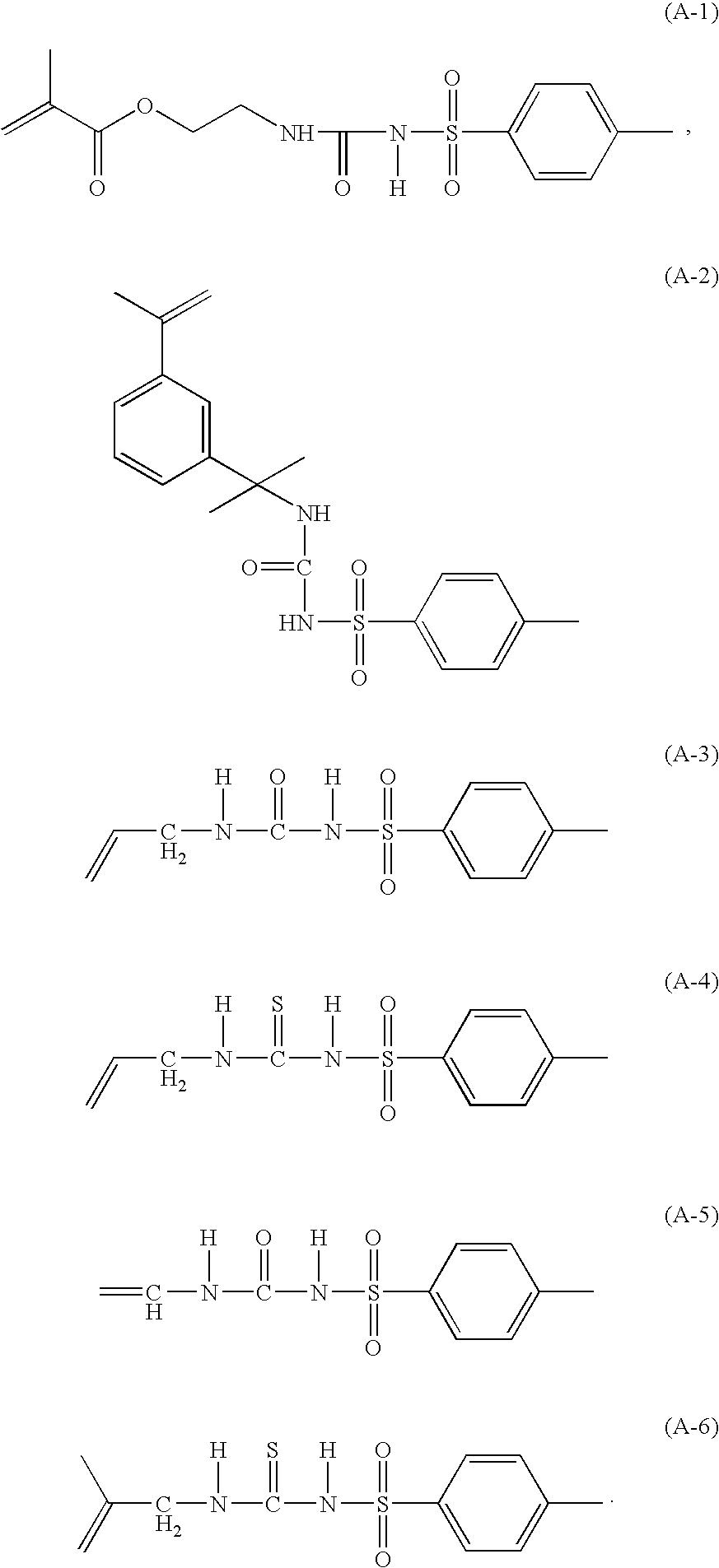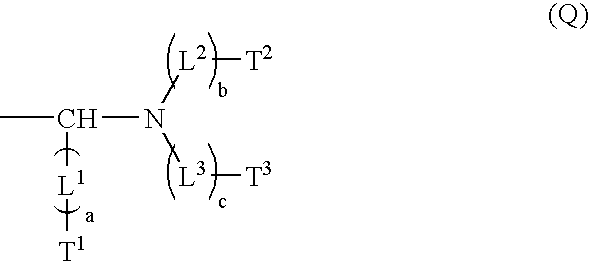Imageable members with improved chemical resistance
a technology of imageable elements and chemical resistance, applied in the field of single and multi-layer positive working imageable elements, can solve the problem of time-consuming use of masks, and achieve the effect of improving resistan
- Summary
- Abstract
- Description
- Claims
- Application Information
AI Technical Summary
Benefits of technology
Problems solved by technology
Method used
Image
Examples
examples
[0140]The components and materials used in the examples and analytical methods were as follows:
[0141]MEK is methyl ethyl ketone.
[0142]DEK is diethyl ketone.
[0143]DAA is diacetone alcohol.
[0144]PMA is 1-methoxy-2-propyl acetate.
[0145]BLO is γ-butyrolactone.
[0146]956 Developer is an organic solvent-based (phenoxyethanol) alkaline developer (Kodak Polychrome Graphics, Norwalk, Conn., a subsidiary of Eastman Kodak Company).
[0147]GoldStar® Plus Developer is a metasilicate-containing developer (Kodak Polychrome Graphics).
[0148]IR Dye A is 2-[2-[2-chloro-3-[(1,3-dihydro-1,3,3-trimethyl-2H-indol-2-ylidene)ethylidene]-1-cyclohexen-1-yl]ethenyl]-1,3,3-trimethyl-3H-indolium bromide (Honeywell Specialty Chemicals, Morristown, N.J.).
[0149]IR Dye B was obtained from Eastman Kodak Company and is represented by the following formula:
[0150]
[0151]IR Dye C is Kayasorb PS210CNE (Nippon Kayaku Co., Ltd., Japan).
[0152]IR Dye D was obtained from Eastman Kodak Company and has the following formula:
[0153]
[0...
examples 1 – 3
Examples 1–3
Single-Layer Imageable Elements
[0173]The imaging layer coating formulations (6.25% solids) are described in the following TABLE I and were prepared as solutions in MEK / PGME / BLO / water (65:15:10:10) for the Example 1–3 elements and the Control A element, and in MEK / PGME (20:80) for the Control B element. The concentrations of components were selected to provide a dry coating weight of 1.5 g / m2 onto a grained and anodized aluminum substrate using a Meyer coating bar. The layers were dried at a temperature of 123° C. for 50 seconds to remove coating solvent(s). The resulting elements were then heat treated at a temperature of 55° C. and a relative humidity of 80% RH for 3 days.
[0174]
TABLE IComponentExample 1Example 2Example 3Control AControl BLB656435353263.363.3PD494A00024.824.8Durez 3381634.44238.800Copolymer 11515000Copolymer 2001500CAHPh0002.02.0DHBP5.54.04.000Crystal1.91.91.922violetIR Dye A0.450.450.450.50.5IR Dye B1.41.41.41.01.0Silikophen60666P50XByk ® 3070.40.40.40....
examples 4 – 6
Examples 4–6
Multi-Layer Imageable Elements
[0185]Multi-layer elements of the invention were prepared with the components shown in TABLE III to provide 4–6 inner coating formulations and a single outer layer coating formulation (amounts in weight %). The outer layer coating was the same for all elements.
[0186]
TABLE IIIInner layer formulation based on 100 g of coating solution with7% non-volatilesFormu-Copoly-IRIRByk ® 307lationJK58merDye CDye D(10% DEK)Solvent*45.6950.70.560.45592.5952.8952.8000.70.560.45592.5965.6950.70.560.45592.59Outer layer formulation based on 100 g of coating solution with7% non-volatilesEthyl VioletByk ® 307PD140P3000(1% acetone)(10% DEK)Solvent**4.8302.1001.4000.56091.110*Coating solvent of MEK / PGME / BLO / Water (50 / 30 / 10 / 10)**Coating solvent of DEK / PMA (92 / 8)
[0187]Each inner layer formulation was applied to Substrate A with a 0.012 inch (0.03 cm) wire-wound bar to provide a dry coating weight of about 1.5 g / m2. The coatings were dried for 35 seconds at 135° C.
[0...
PUM
| Property | Measurement | Unit |
|---|---|---|
| Percent by mass | aaaaa | aaaaa |
| Percent by mass | aaaaa | aaaaa |
| Percent by mass | aaaaa | aaaaa |
Abstract
Description
Claims
Application Information
 Login to View More
Login to View More - R&D
- Intellectual Property
- Life Sciences
- Materials
- Tech Scout
- Unparalleled Data Quality
- Higher Quality Content
- 60% Fewer Hallucinations
Browse by: Latest US Patents, China's latest patents, Technical Efficacy Thesaurus, Application Domain, Technology Topic, Popular Technical Reports.
© 2025 PatSnap. All rights reserved.Legal|Privacy policy|Modern Slavery Act Transparency Statement|Sitemap|About US| Contact US: help@patsnap.com



